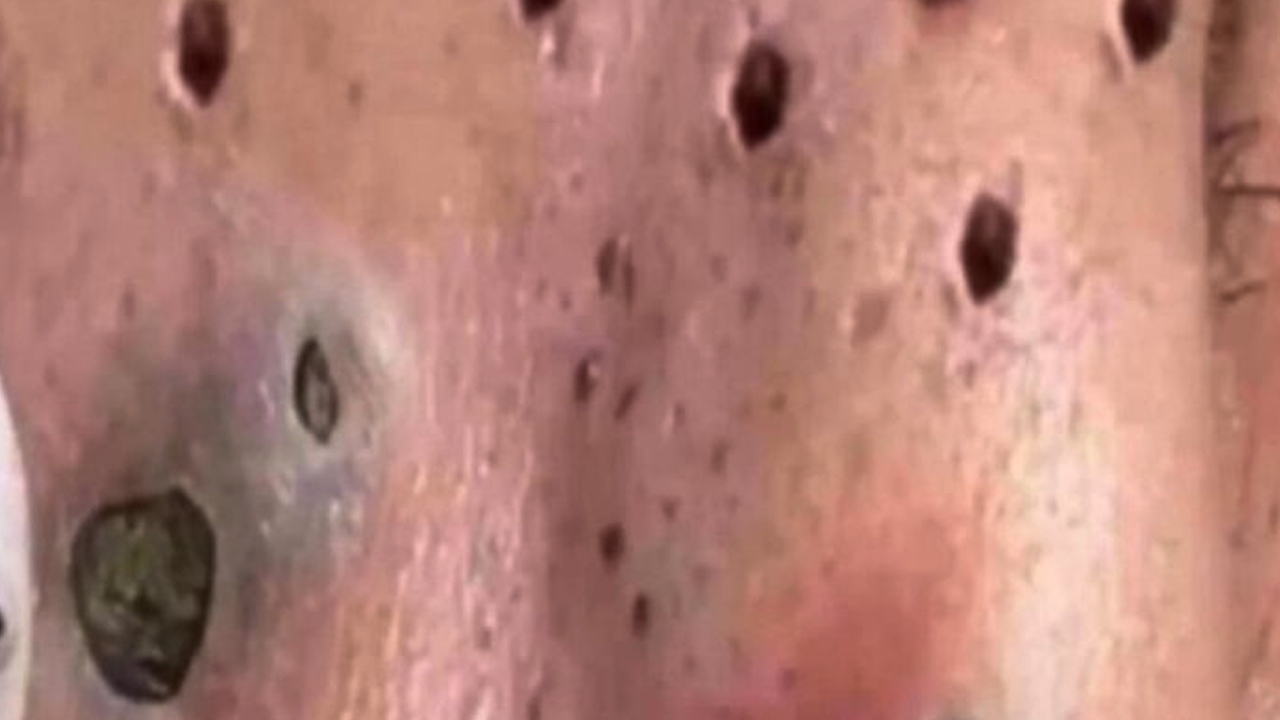Cystic acne is a severe form of acne characterized by deep, painful, and inflamed lesions beneath the skin’s surface. Attempting to remove or pop these cysts at home is strongly discouraged due to the risk of scarring, infection, and further inflammation. Instead, a combination of proper skincare practices and medical treatments is recommended.verywellhealth.com
🧴 Recommended Treatments for Cystic Acne
1. Topical Treatments
-
Benzoyl Peroxide: Effective in reducing acne-causing bacteria and inflammation.
-
Salicylic Acid: Helps unclog pores and reduce swelling.
-
Topical Retinoids (e.g., Adapalene, Tretinoin): Promote skin cell turnover and prevent pore blockages. Adapalene is available over-the-counter, while others may require a prescription.
-
Corticosteroid Injections: Administered by a dermatologist to reduce inflammation and size of cysts rapidly.
2. Oral Medications
-
Isotretinoin (Accutane): A potent medication for severe cystic acne, addressing multiple causes including oil production and clogged pores. It requires close medical supervision due to potential side effects.
-
Oral Antibiotics: Such as tetracycline or doxycycline, reduce bacteria and inflammation. Typically used short-term to prevent antibiotic resistance.
-
Spironolactone: Particularly effective for women with hormonal acne, it reduces oil production by blocking androgen hormones.
3. Professional Procedures
-
Corticosteroid Injections: Direct injection into the cyst can rapidly reduce its size and pain. This method is typically used for large, persistent cysts.
🚫 What to Avoid
-
Popping or Squeezing Cysts: This can push bacteria deeper, leading to more inflammation, infection, and scarring.
-
Harsh Scrubs or Exfoliants: These can irritate the skin and exacerbate inflammation.
-
Using Non-Comedogenic Products: Opt for oil-free and non-comedogenic skincare and makeup products to prevent pore blockages.
🧼 Skincare Routine Tips
-
Gentle Cleansing: Use a mild, non-irritating cleanser twice daily.
-
Moisturizing: Apply a lightweight, oil-free moisturizer to maintain skin hydration.
-
Sun Protection: Use a broad-spectrum sunscreen daily, as some acne treatments can increase sun sensitivity.
🩺 When to Consult a Dermatologist
If over-the-counter treatments do not improve your condition after several weeks, or if cystic acne is causing significant discomfort or emotional distress, it’s important to seek professional medical advice. A dermatologist can provide personalized treatment options, including prescription medications and procedures tailored to your specific needs.
✅ Cystic Pimple Treatment Options (medically reviewed)
Cystic acne (or a cystic pimple) is the most severe form of acne and often needs stronger, consistent treatment. Here’s a breakdown of recommended treatments, both over-the-counter (OTC) and prescription, backed by dermatology sources:
🧴 1. Topical Treatments (Best for mild to moderate cysts)
| Medication | What It Does | How to Use | Source |
|---|---|---|---|
| Benzoyl Peroxide | Kills acne-causing bacteria | Apply 2.5–10% gel once daily | Healthline |
| Salicylic Acid | Unclogs pores and reduces swelling | Use 0.5–2% cleanser or cream daily | WebMD |
| Adapalene (Differin) | A retinoid that helps skin cell turnover | Apply pea-sized amount at night | Mayo Clinic |
💊 2. Prescription Treatments (For moderate to severe cystic acne)
| Medication | Purpose | Duration | Source |
|---|---|---|---|
| Oral Antibiotics (e.g., doxycycline) | Reduce bacteria and inflammation | Short-term (2–3 months) | AAD |
| Spironolactone (for women) | Blocks hormones that cause breakouts | Long-term | Health.com |
| Isotretinoin (Accutane) | Treats all acne causes (oil, bacteria, clogged pores) | 4–6 months under dermatologist supervision | FDA |
| Topical antibiotics (e.g., clindamycin) | Controls bacteria and inflammation | Combine with BP or retinoids | NIH |
💉 3. Dermatological Procedures
| Procedure | What It Does | Best For | Source |
|---|---|---|---|
| Corticosteroid Injection | Rapidly reduces swelling & pain | Single large cyst | AAD |
| Drainage & Extraction | Drains a large, persistent cyst | Only by dermatologist | Mayo Clinic |
| Laser & Light Therapy | Reduces bacteria and oil production | Ongoing cystic acne | NIH |
🧼 Supportive Skincare Routine
-
Cleanser: Gentle foaming cleanser (e.g., Cetaphil or CeraVe)
-
Moisturizer: Non-comedogenic, oil-free
-
Sunscreen: Daily use to prevent hyperpigmentation
-
Spot Treatment: Sulfur-based masks or benzoyl peroxide gels
🚨 When to See a Dermatologist
-
Cysts are frequent, large, or painful
-
OTC methods haven’t worked after 6–8 weeks
-
You want to avoid long-term scarring
